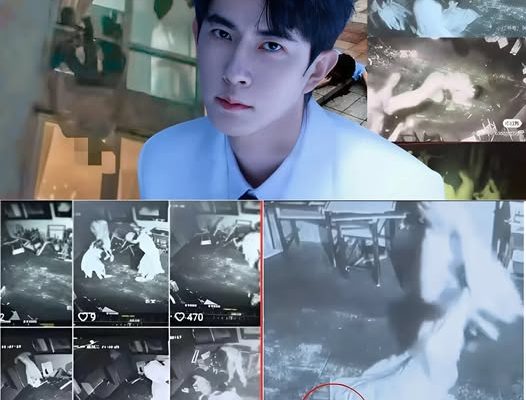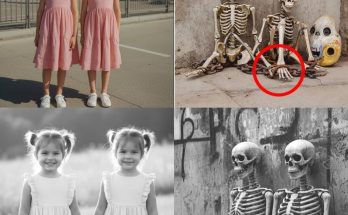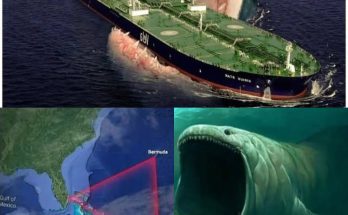A Viral Photo, a Vanished Actor, and a Mystery That Won’t Die
It began with a single photograph — grainy, color-drained, and terrifyingly real.
A man lies on the ground, his face contorted in fear and pain, as if caught between a scream and a plea for help. His shirt is torn. His hands reach toward the camera as if the photographer was his last hope.

The caption was only two words: “He’s gone.”
Within hours, the image had been shared more than five million times. Across social media, forums, and news outlets, users speculated, analyzed, and argued about what they were seeing. Some insisted it was a film still. Others swore it was evidence of something darker.
No one could agree on the truth.
But everyone agreed on one thing: they couldn’t look away.
The Man in the Photo
Authorities have not confirmed his identity, but online sleuths quickly linked the face to Liam Vong, a popular Vietnamese-American actor known for his warm personality and recent disappearance from public view.
Liam, 34, had last posted to social media three weeks earlier — a smiling selfie on a film set, captioned, “Last day of shooting. Can’t wait to show you what’s next.”
That “next” never came.
When the image appeared, fans flooded his official accounts with desperate messages.
“Please tell us this is fake.”
“If you see this, we’re praying for you.”
“Liam, where are you?”
But the accounts remained silent.
The Origins of the Leak
The first appearance of the image was traced to a small, anonymous forum on the dark web dedicated to “lost media.” The original post has since been deleted, but archived screenshots show a timestamp of 2:14 a.m., Monday, and a single message attached:
“He shouldn’t have filmed it. They said not to.”
Cyber-investigators and journalists have since tried to determine where the image was taken. The background — cracked tiles, a flickering fluorescent light, a patch of red paint on the wall — seemed too specific to be accidental.

A fan group compared stills from Liam’s recent film work and discovered an uncanny resemblance to an unfinished indie project titled “The Hollow Frame.”
But the film’s director, contacted by The Herald, denied any connection:
“That’s not from our movie. Our footage was shot outdoors. Whatever that photo is, it’s not part of any production I know of.”
The Public Reaction
The shock was instant. By sunrise, major platforms were overrun with hashtags: #FindLiamVong, #HauntingImage, #TheDraggedMan.
TikTok users created slow-motion edits of the picture with ominous music. On Reddit, digital forensics enthusiasts examined lighting, pixel depth, and metadata. One claimed to find GPS coordinates buried in the file’s data pointing to a remote industrial district outside Ho Chi Minh City.
Theories spread like wildfire.
Some believed it was a publicity stunt — a viral marketing campaign for a new horror series. Others insisted it was genuine evidence of abuse or trafficking.
And then there were those who called it a digital ghost story — the haunting of an actor through his own image, repeated so many times online that fiction and reality had fused into one.
The Investigation
Two days after the leak, the Global Cyber Crime Division announced it had launched an inquiry into the origin of the image.
“We are treating this as a potential case of digital manipulation, identity theft, or criminal intimidation,” said spokesperson Mai Trinh. “Until we verify authenticity, all possibilities remain open.”
At the same time, Liam’s management agency released a statement confirming that the actor had indeed been “out of contact” with them for over a week but urged the public “not to jump to conclusions.”
“We are cooperating with authorities,” the agency’s message read. “We ask fans to refrain from sharing or resharing the image out of respect for privacy and ongoing investigations.”
Still, the image continued to circulate. Every time a post was removed, ten more appeared.
The Psychological Toll
Experts have described the viral photo as a textbook case of digital trauma — an image so emotionally charged that it bypasses logic and embeds itself in the viewer’s memory.
Dr. Laura Nguyen, a clinical psychologist who studies online mass reactions, explained:
“It’s not just what’s in the photo — it’s what we imagine around it. The ambiguity forces the brain to fill in the blanks with fear. That’s what makes it unforgettable.”
Some social-media users reported nightmares or anxiety after seeing the image. A few fan pages temporarily shut down, saying they couldn’t handle the flood of disturbing messages.
“It’s like he’s looking at you,” one user wrote. “Like he knows you’re watching.”
A Digital Hunt for the Truth
By the weekend, an independent investigative collective calling itself “Project Iris” claimed to have identified the building in the photo as part of an abandoned textile factory complex in Da Nang. The group released drone footage showing a near-identical interior — same floor tiles, same fluorescent lighting.
Local authorities visited the site but found no trace of Liam or any evidence of a struggle. The factory had been closed since 2011.
Meanwhile, new rumors emerged that the image was actually a composite — multiple layers of unrelated photos merged using AI deepfake technology.
Cybersecurity analysts warned that it could be the most sophisticated “synthetic leak” yet, designed to exploit humanity’s fascination with tragedy.
“What makes this terrifying,” said analyst Carter Lee, “is not whether it’s real or fake, but that we can’t tell the difference anymore.”
The Vanishing Trail
As the investigation deepened, the mystery grew. The original post’s IP address traced back to an encrypted VPN server in Estonia, then rerouted through five countries. The uploader’s identity remains unknown.
The last confirmed sighting of Liam was from security footage outside a hotel in Bangkok two weeks before the leak. He appeared calm, carrying a small backpack, greeting staff politely — and then walking out of frame.
He never checked out.
The Cultural Shockwave
The case has reignited debates about the ethics of viral imagery, digital privacy, and the thin line between empathy and exploitation.
Millions claim to care, yet they keep reposting the image that may have immortalized a person’s suffering.
Journalist Anya Solis wrote in The Chronicle:
“We say we want the truth. But what we really want is to feel something — horror, sadness, connection — through someone else’s pain. The internet has turned tragedy into entertainment.”
The Final Frame
Today, two weeks after the first leak, no new information has surfaced. Liam Vong’s family has pleaded for peace. Streaming platforms have banned the image, but fragments continue to reappear in obscure corners of the web.
What remains is not certainty, but a void — a digital silence more unsettling than the image itself.
Was it art? Was it real? Was it both?
For now, one thing is undeniable:
An anonymous photograph, no longer than a heartbeat, has forced an entire generation to question what it means to look — and what it costs to keep looking.




